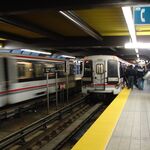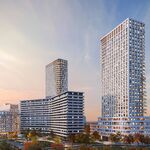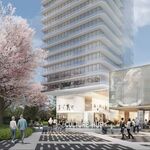http://www.thestar.com/news/transpo...doubt-cast-on-ford-s-hopes-for-subway-partner
From the Toronto Star...
Doubt cast on Ford’s hopes for subway partner
Tess Kalinowski
Transportation Reporter
More about
Transportation»
Taxpayers who want a subway on Sheppard Ave, should be careful what they wish for — if it takes a public-private partnership to get it built, as Mayor Rob Ford has suggested.
Residents may not even recognize their neighbourhood if developers turn Sheppard into a condo cavern to make back their money, warned Councillor Shelley Carroll (Don Valley East).
Ford was vague Thursday about the public/private finance-design-build proposal his office has made to Metrolinx, which would pay for the subway extension with a combination of development charges and tax increment financing.
“We haven’t got any detailed info right now. We’re just working with a number of people, a number of groups,” Ford told reporters. “There’s a number of issues that we’re putting together. Things are going very well. I’m very, very sure that we’re going to get to building Sheppard underground and building Eglinton underground.”
The proposal, if accepted by the province, would replace the old Toronto-Metrolinx plan to build light rail on along Sheppard, Finch and Eglinton and the old Scarborough RT route. That would free up the $8.15 billion the province has pledged for transit to put the Eglinton light rail line entirely underground from about Jane St. to Kennedy Station.
The SRT would be converted to either light rail or subway and the Finch LRT would be replaced with an express bus.
Tax increment financing (TIF) was introduced by finance minister Greg Sorbara in 2006 as a way to pay for the Spadina subway extension. It enables municipalities to borrow against future property tax revenues from land whose value shoots up after the subway is built.
Developers are enticed to build in the target area with grants that reduce the annual taxes they would normally have to pay. Over a period of years, those grants are phased out, resulting in much higher tax revenues to the city.
Toronto could also use private-sector partners to develop the subway station properties, explained MPP David Caplan, former public infrastructure renewal minister. A company could buy or lease a property, build an office, a mall or condos on top of the station, or develop a retail concourse and operate a concession there for 25 or 30 years, said Caplan, architect of the Liberal government’s strategy for building public infrastructure with private money.
“Tax increment financing has been used in Europe to build transit. The public-private station development has been used in Asia. These aren’t wild, risky ideas,” Caplan said. “They’re proven.”
But Sheppard Ave. doesn’t have anything like the population densities that typically support Asian-style development of this sort, and experts couldn’t cite a single instance where a Canadian project on the scale of the $4 billion Sheppard subway has been paid for exclusively with a combination of TIF and development charges.
Without a government financing guarantee, something the city and province might not be in a position to provide, Sheppard “is just fraught with immense risks,” said Joseph D’Cruz of the Rotman School of Management at the University of Toronto.
The mayor is proposing higher development fees and will raise taxes in that corridor.
“Those are very political promises and the risk is he may not be able to deliver on those promises. That means the revenue stream which is dedicated to paying back the developer is very uncertain,” he said.
Although private partnerships have a reputation for bringing projects in on time and on budget — with penalties applied if the targets aren’t met — that can add to the investor’s risk, said D’Cruz.
“When you do a project this large it’s very difficult to estimate the costs in advance and it’s almost impossible to anticipate all the problems you’ll encounter. So it’s very hard to put a number on what it’s going to cost,” he said.
“We’re talking about someone who’d be willing to take on a lot of risk in exchange for right of first refusal on building,” said Carroll, former city budget chief. “This can be gold rush time for developers, because (building highrises) is the only way to fill the (subway) with riders and grow (the tax) assessment,” she said.
Some experts have suggested that the Eglinton light rail project could be more attractive to private investment, because the ridership supports it and the operation could be automated, like Vancouver’s SkyTrain with its driverless vehicles.
A Sheppard subway wouldn’t carry more than 7,000 or 8,000 people per hour, but breaking even on subway operations takes at least 15,000 riders per hour.
The existing Sheppard line loses millions annually in operating costs, said Councillor and former TTC vice chair Joe Mihevc.
http://www.thestar.com/news/transpo...doubt-cast-on-ford-s-hopes-for-subway-partner




